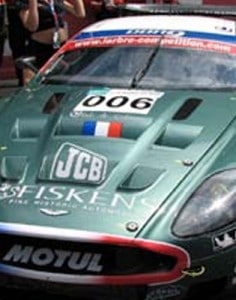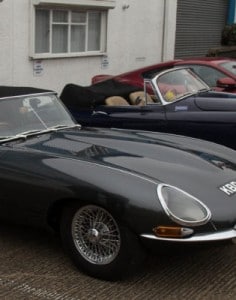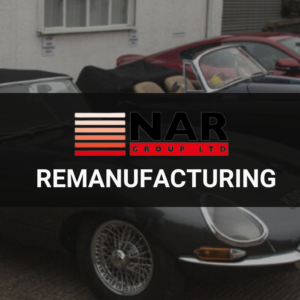Powder coating is a form of finishing which applies a uniform finish using electrostatic spray deposition. It has become the preferred choice for finishing a wide variety of metal products, including household items and automotive parts due to its advantages over traditional liquid paint. By creating an electrostatic charge, the dry powder adheres to the surface intended for coating and then is finished in a curing oven to set in a durable and uniform layer. The process offers several advantages over traditional methods but, like all things, has a few downsides too. Today we are going to explore the advantages and disadvantages of powder coating and show you why we use it in our state-of-the-art facilities in Northampton.
What is Powder Coating?
Powder coating is a method of adhering coloured pigment to a surface in the form of a dry powder. The powder contains other additives which ensure that when the powder has been cured and set, it creates a high-quality, uniform, and durable finish which is resistant to scratching and chipping. Unlike liquid paint which can run, drip, and sag, a powder coating is adhered through an electrostatic process using the precision of science to ensure every coating is even and uniform and the constituents of the powder are durable, long-lasting, and of the highest quality. Offering not only a superior finish but also environmental and cost benefits, powder coating has become the number one method of ensuring a perfect finish every time.
Advantages of Powder Coating
Durability: Powder coating is known for its durable finish, especially compared to traditional paints. The specially formulated powder is a mixture of pigment, resin, and other additives that allow for both the desired colour and a strong and durable shell to form under the process of curing. It is resistant to scratching and fading, making it an excellent choice for items under heavy use such as automotive parts and industrial equipment.
Strong Adhesion means Low Maintenance: Powder-coated surfaces are bonded both mechanically through the electrostatic process and chemically during the curing process, ensuring the finish remains bonded and intact over time and so requires less maintenance and upkeep than traditional paint.
Uniform Coverage: Thanks to the electrostatic process, all of the particles of powder are forced into a uniform alignment and spaced equidistant from each other. This ensures no build-up or change in topography, ensuring the coating is smooth and flat and follows the shape of the object precisely.
Cost-Effective: Whilst the set-up costs for powder coating equipment can be high, the process helps to save money in the long run. It is possible to reuse overspray powder that did not adhere, and so we can cut down significantly on waste materials. Also, the durability of the powder-coated finish ensures that the need for touch-ups and repairs is reduced, which saves money on maintenance over time too.
Efficiency: The process of powder coating is extremely efficient in that the application of powder is much faster than traditional painting and the curing time significantly shorter than the drying time paint requires. This ensures faster turnaround time for projects and reduces the costs of labour.
Aesthetically Pleasing: With a wide range of colours and finishes to choose from, including high gloss, matte, and even textured finishes, powder coating allows for flexibility in the design process and the high-quality finish ensures those design choices will wow and delight as intended.
Chemical Resistance: For automotive parts, cleaning is often done with industrial-strength alkaline and acidic cleaning agents which can break down most traditional paints. Powder coating offers chemical resistance against these cleaning agents which ensures the longevity and resilience of coated items and peace of mind for maintaining their integrity even when in contact with harsh chemicals.
Environmental Benefits: Powder coating is an environmentally friendly process due to the low emission of volatile organic compounds (VOCs) and the fact that they do not contain solvents like traditional paints.
Improved Performance for Cooling Parts: When used on radiators and other components of your car’s cooling systems, a powder coating dramatically improves heat output as powder coatings offer a greater heat emission than the traditional metal of an uncoated radiator. The easier it is for heat to be carried away from your radiator and into the environment, the greater its performance can be.
Disadvantages of Powder Coating
Limited Material Application: Powder coating is only useable on metal surfaces as only these surfaces provide a great enough electrostatic charge for the powder to adhere to, which makes it unusable on materials such as plastic and wood. Additionally, trying to achieve a thin and smooth finish can be difficult on smaller and more intricate parts.
Colour Matching Difficulties: Whilst powder coating does offer a wide range of colours, it can be challenging to match specific shades or make adjustments once the process is underway, unlike traditional liquid paints. Once a colour has been mixed, it cannot be altered or adjusted throughout the process, so this requires excellent forethought and can be a limitation for projects that require precise colour matching.
Repair and Touch-Ups: Even though powder coating is highly durable, when damages do occur it is much more difficult to repair than traditional paint, as the entire coat is adhered in one single session. It is less likely that a fix can be achieved by repairing the area, and more likely that the entire piece needs to be redone even for small damage that has occurred.
Curing Process: To cure the powder, a high-heat oven is required which means that heat-sensitive materials cannot undergo the process. This limits the process to metals and other materials which are capable of withstanding the heat of the curing oven.
Conclusion
Powder coating is the perfect choice for coating metal surfaces and automotive parts, thanks to its uniform finish and high durability. It provides a superior finish to liquid paint that is resistant to chipping, scratching, and fading as well as resistant to chemical cleaning agents that are often used in automotive cleaning. There are a few downsides when it comes to repairing touch-ups and colour matching which should be taken into account before deciding if powder coating is the right option for your job.
When it comes to powder coating, NAR Group stands out with over fifty years of experience and ISO9001 accreditation, offering unparalleled expertise in bespoke cooling solutions for vehicles. Our new powder coating facilities produce no air pollution thanks to a 99.9% filtration efficiency, reflecting our commitment to environmental responsibility. By choosing NAR Group for your powder coating needs, you not only benefit from our extensive experience but also contribute to a greener planet.





